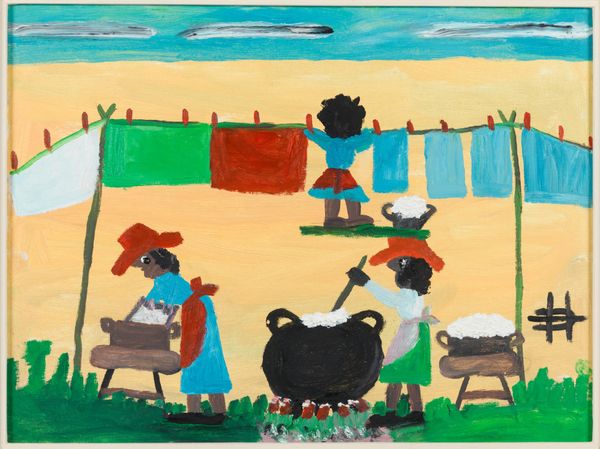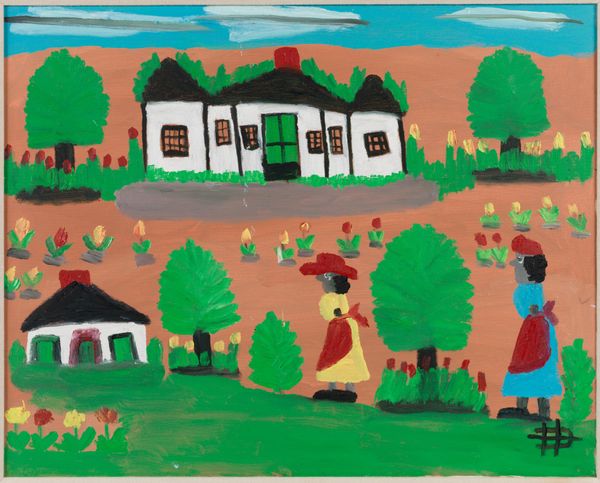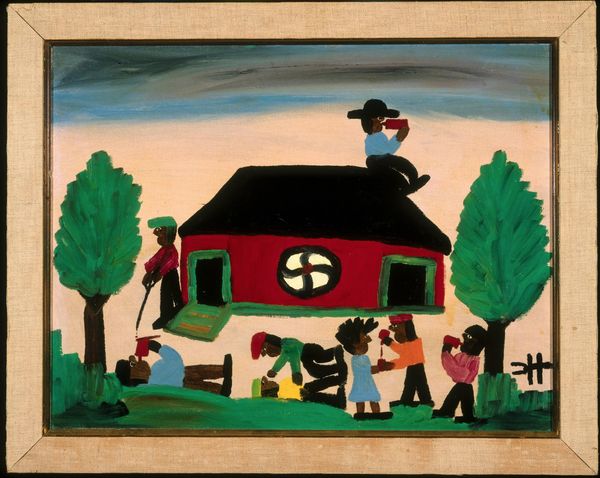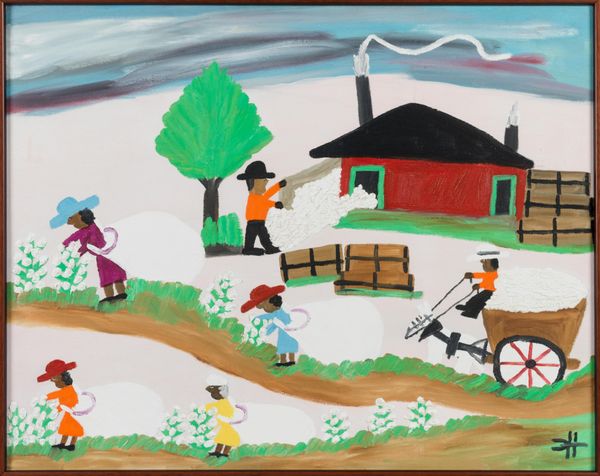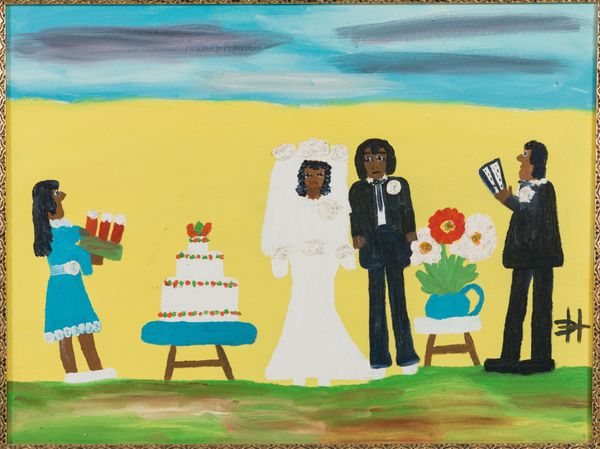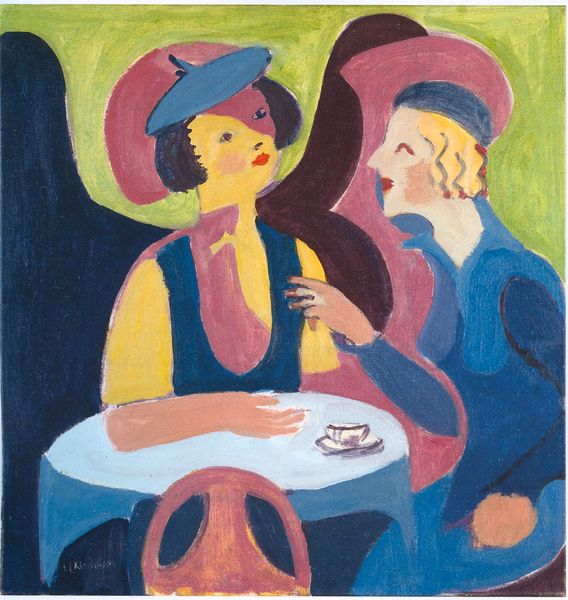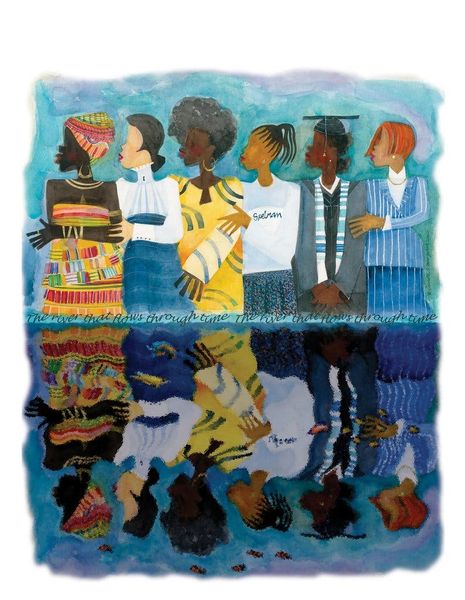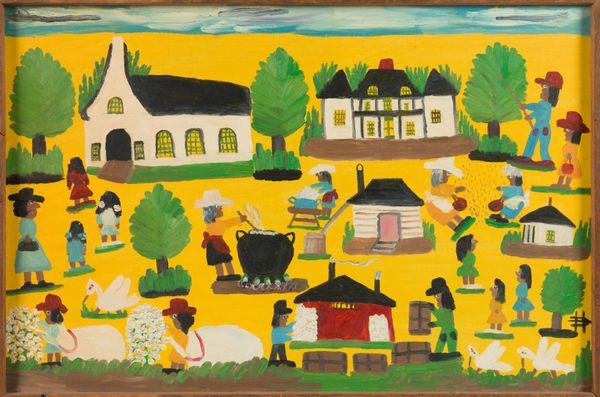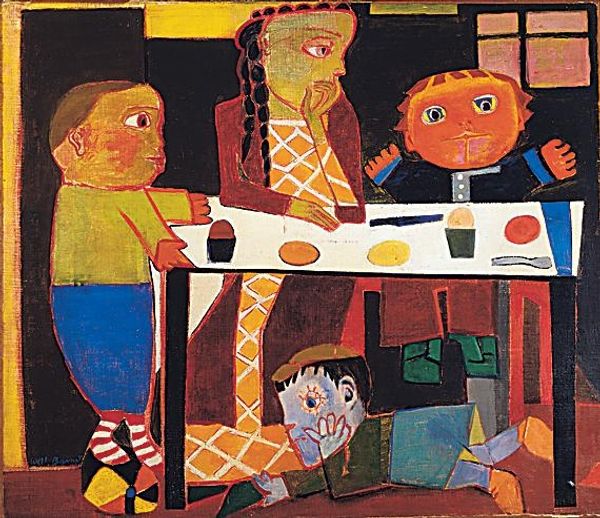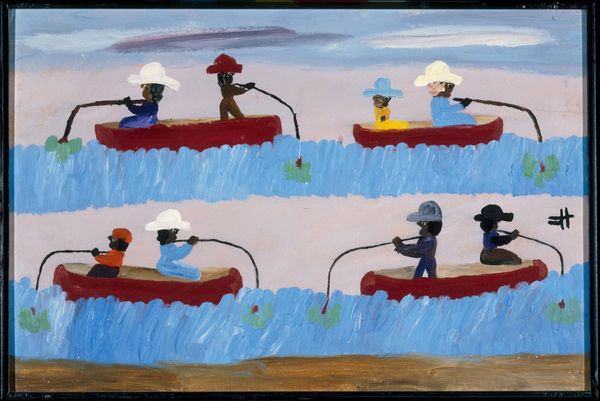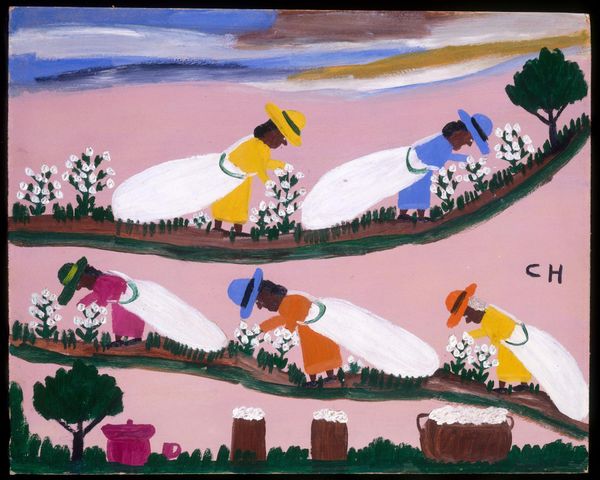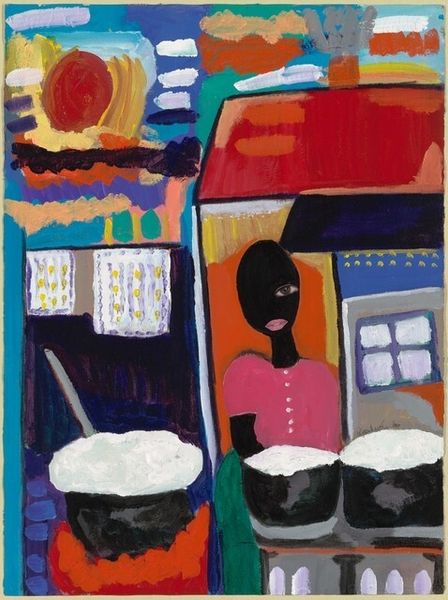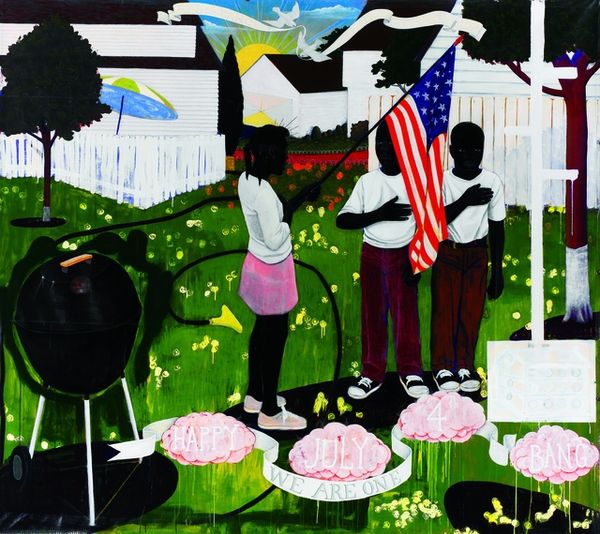
#
cartoon like
#
cartoon based
#
caricature
#
animal portrait
#
naive art
#
pop art-influence
#
animal drawing portrait
#
cartoon style
#
cartoon carciture
#
cartoon theme
Dimensions: 45.72 x 60.96 cm
Copyright: Clementine Hunter,Fair Use
Curator: Let's discuss Clementine Hunter's "Playing Cards" from 1970. I'm struck by the flattened perspective, the vibrant colors— it almost feels like a memory being recalled. What stands out to you? Editor: It’s definitely folksy! The figures are very simply drawn, almost like caricatures. The materials seem straightforward – maybe house paint on canvas? I'm wondering, how do the materials themselves contribute to the message or understanding of the artwork? Curator: That’s a crucial question! Consider Hunter's background – a self-taught artist, working on found materials in rural Louisiana. The fact that she might be using repurposed materials – could that challenge conventional art boundaries, blurring distinctions between art and craft, labor and leisure? Editor: So, the "low" materials actually become a part of the artwork’s meaning, reflecting the artist's everyday reality and the available resources? Curator: Precisely. It emphasizes the social context. The accessibility of her materials reflects a democratizing approach to art-making itself. She transformed ordinary elements into a reflection of her world. The painting represents more than just leisure; it embodies cultural narratives, using basic elements to express intricate social dynamics. Does the way she simplifies forms and spaces speak to a specific community or tradition? Editor: It might reference folk art traditions, making it more accessible to people outside of the art world. Curator: Exactly. Hunter gives importance to labor and community using simplistic methods to explore serious concepts and themes. Editor: So, it's not *just* a depiction of a game, but a testament to the materials, the process, and the world in which it was created. It makes you consider consumption of products. Thanks, that helps contextualize the image much more for me.
Comments
No comments
Be the first to comment and join the conversation on the ultimate creative platform.
